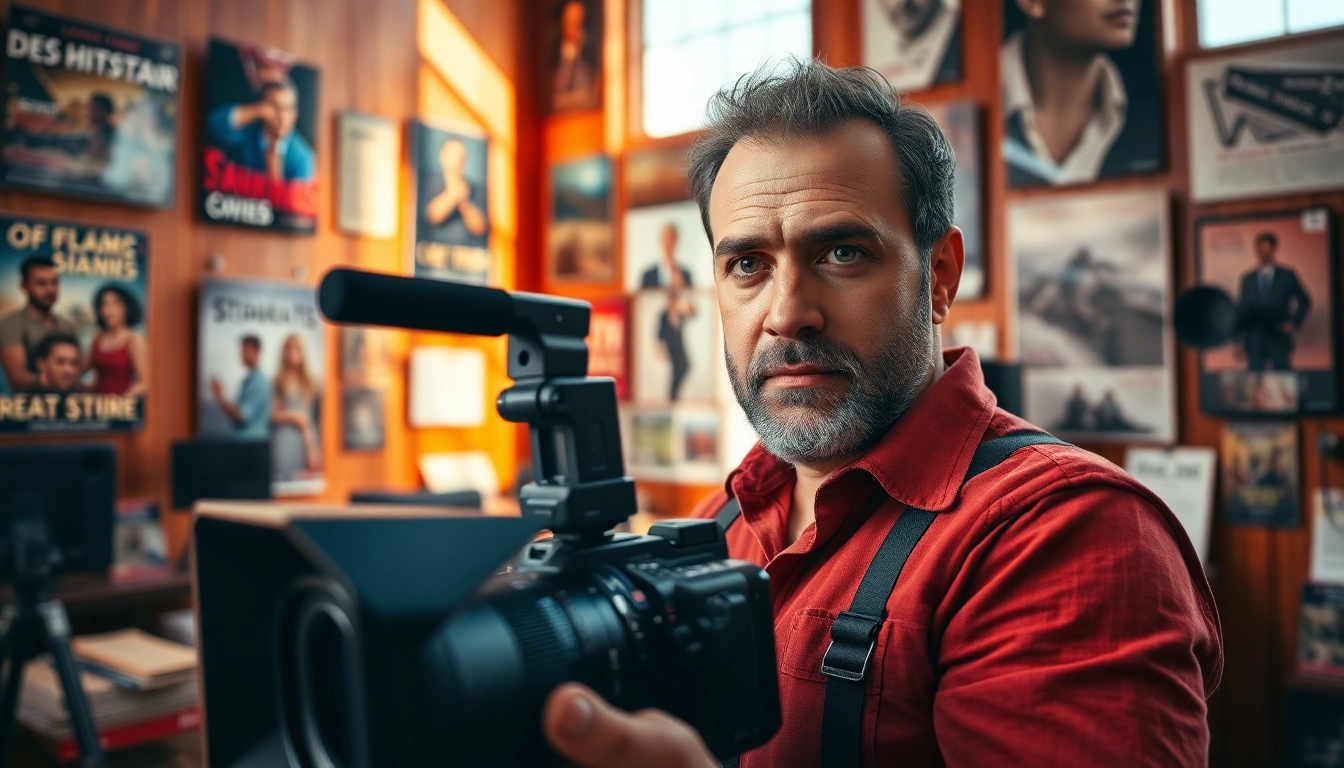Understanding the Art of Stories & Documentaries
The Importance of Narrative in Stories & Documentaries
Narrative is the backbone of any engaging work, particularly in the realm of Stories & Documentaries. Whether it’s a gripping film or a compelling documentary series, the narrative structure guides viewers through complex themes and emotions. In storytelling, the importance of narrative transcends mere entertainment; it serves as a vehicle for truth, perspective, and cultural discourse.
Understanding narrative in documentaries allows filmmakers to create a tapestry that not only informs but also moves and inspires audiences. A well-crafted narrative can weave personal histories with universal truths, making the material accessible and profound. This narrative framework can establish the viewer’s emotional connection, aiding retention and fostering empathy.
Key Elements of Compelling Stories & Documentaries
The effectiveness of any story or documentary often lies in several key components:
- Characters: Central to every story are the characters—the people whose lives the audience will follow. In documentaries, these might include subjects directly involved in the theme or experts shedding light on the topic.
- Conflict: Every compelling story involves conflict, whether external or internal. Documentaries often highlight societal issues or personal struggles, which add depth to the narrative.
- Resolution: The way conflicts are resolved or understood allows audiences to leave with a sense of closure or challenge their own perceptions.
- Authenticity: Particularly in documentaries, authenticity builds trust. Viewers must feel that what they are watching represents genuine stories and real emotions.
- Cinematic Techniques: The use of visuals, sound, and editing all contribute to how the narrative is perceived. Strong cinematography can evoke feelings that mere words might not.
How Stories & Documentaries Influence Society
Stories—be they in the form of documentaries, films, or literary works—play a crucial role in shaping societal norms and perspectives. They spark conversations, bring attention to overlooked issues, and can inspire action. Documentaries, in particular, have the power to expose hidden truths and present underreported narratives. The social impact of a documentary can often be measured in its ability to mobilize communities, influence policies, or shift public perception.
Moreover, storytelling fosters inclusivity by bringing marginal voices into the spotlight, thus broadening horizons and engendering empathy across diverse audiences. As viewers engage with various stories, they are presented with the opportunity to challenge their own worldviews and, in some cases, catalyze positive change within their communities.
Techniques for Creating Engaging Stories & Documentaries
Research and Planning for Effective Stories & Documentaries
Creating a compelling story or documentary begins with thorough research and meticulous planning. It is vital to gather reliable information, discern multiple perspectives, and identify compelling narratives that are often overlooked. Good research informs the direction of the project and ensures that the final product is credible and engaging.
Planning includes outlining the documentary structure, scheduling interviews with subjects, and scouting locations for filming. Timelines help keep the production organized, while storyboards can visualize scenes before filming begins. Effective pre-production lays the groundwork for a smoother shooting process, ultimately enhancing the final narrative.
Interview Techniques that Enhance Stories & Documentaries
The interview process is critical in documentaries, as it brings personal stories and insights to the forefront. The way interviews are conducted can significantly affect the quality and authenticity of the material gathered. Here are some effective techniques:
- Create a Comfortable Environment: Building rapport with interviewees can lead to more genuine responses. Ensure they are at ease, and allow them to share at their pace.
- Ask Open-ended Questions: Open-ended questions promote dialogue and allow subjects to express their thoughts deeply rather than providing simple yes or no answers.
- Listen Actively: Active listening encourages interviewees to share more and can lead to unexpected insights that enrich the narrative.
- Follow-up Questions: Encourage interviewees to elaborate on interesting points or share additional anecdotes that may enhance the story.
Visual Storytelling Elements in Stories & Documentaries
Visual storytelling is a critical aspect of crafting engaging documentaries. It’s not enough to tell a story; how the story is presented visually can dramatically affect its impact. Here are some critical elements:
- Cinematography: High-quality visuals can evoke emotions and draw viewers into the narrative. The choice of shots, angles, and lighting can set the mood and tone of a film.
- Editing: The editing process can shape your documentary’s pace and flow. Seamless transitions, pacing aligned with the narrative, and strategic use of music can enhance viewer engagement.
- Infographics and Animations: In some cases, especially in documentary genres addressing complex subjects, visual aids like infographics or animations can simplify difficult concepts and make them more accessible.
Common Challenges in Stories & Documentaries Production
Navigating Budget Constraints in Stories & Documentaries
Producing a documentary can often be hindered by budget constraints. However, creativity can be employed to work within limits. Here are strategies for managing financial resources effectively:
- Funding and Grants: Research potential grants and funding opportunities that support documentary filmmaking. Crowdfunding has also become a viable avenue for independent filmmakers.
- Optimize Resources: Look for ways to minimize costs by leveraging available resources, such as using equipment you may already own or collaborating with others in the industry.
- Selective Hiring: If hiring professionals is necessary, prioritize roles that will have the most significant impact on production quality, like a skilled editor or cinematographer.
Overcoming Creative Blocks in Stories & Documentaries
Creative blocks can be frustrating, especially when they hinder the development of a project. Here are tips to overcome these challenges:
- Take Breaks: Sometimes stepping away from the project to gain perspective can reignite creativity. Engage in activities outside your usual routine to inspire fresh ideas.
- Seek Feedback: Collaborating with others can offer new insights and perspectives that help break through creative barriers. Networking with fellow filmmakers or joining creative forums can be beneficial.
- Experiment: Allow yourself the freedom to explore different storytelling techniques or formats, which can lead to unexpected discoveries.
Legal Considerations in Stories & Documentaries
Legal issues can pose challenges for documentary filmmakers, especially regarding copyright and consent. Here are essential considerations to navigate these challenges:
- Copyright Issues: Always ensure that you have the rights to any music, footage, and material used in your documentary. Utilizing royalty-free or licensed content can prevent possible legal repercussions.
- Subject Consent: Obtain written consent from interview subjects, and fully inform them about how their stories will be portrayed. An ethical approach to consent cultivates trust and integrity.
- Release Forms: Using release forms for locations and individuals featured in your documentary is essential to avoid legal complications down the line.
Evaluating the Impact of Stories & Documentaries
Metrics for Assessing Audience Engagement with Stories & Documentaries
Evaluating the impact of your documentary is key to understanding its effectiveness. Here are various metrics to consider:
- Viewership Statistics: Analyze viewership numbers through various channels, such as streaming platforms or screenings, to gauge audience reach.
- Audience Feedback: Collect feedback through surveys or social media interactions. Positive responses, as well as constructive criticism, can help refine future projects.
- Discussion and Engagement: Monitor online discussions surrounding your documentary. Active engagement and shared discussions reflect emotional investment from the audience.
The Role of Feedback in Improving Stories & Documentaries
Feedback is crucial in the filmmaking process, allowing creators to refine their work continually. Here’s how to leverage feedback effectively:
- Host Test Screenings: Gather a sample audience to preview your documentary before its official release. Their reactions can highlight strengths and weaknesses you may have overlooked.
- Implementing Constructive Feedback: Take note of suggestions that can enhance the film’s narrative or technical aspects and be willing to make changes based on the audience’s responses.
- Continuous Improvement: Use the feedback loop as an ongoing process for improvement, applying insights gained from each project to future endeavors.
Case Studies: Successful Stories & Documentaries Impact
Examining successful examples of stories and documentaries can provide valuable insights. Consider documentaries that have led to societal transformations or cultural dialogues. For instance, documentaries focused on climate change or social justice often catalyze movements, informing and mobilizing public sentiment.
Analyze their methods, narratives, and audience engagement to draw lessons that can be applied to future projects. The impact of a well-created documentary can resonate long after its release, advocating for change and creating awareness around critical issues.
Future Trends in Stories & Documentaries
The Rise of Digital Platforms for Stories & Documentaries
The digital era has transformed how stories and documentaries are produced, distributed, and consumed. Streaming platforms have become vital venues for documentary filmmakers, allowing for broader distribution and access to diverse audiences. This shift towards online content consumption is set to continue, with platforms increasingly prioritizing original documentaries that resonate with niche audiences.
Innovations in Storytelling Techniques for Stories & Documentaries
As technology advances, so too do the methods used to tell stories. Interactive documentaries and augmented reality (AR) experiences allow audiences to engage in storytelling in unprecedented ways. Innovations in virtual reality (VR) offer immersive experiences, enabling viewers to step into the narrative.
Predictions for Stories & Documentaries in the Coming Years
The landscape for stories and documentaries will continue evolving, reflecting societal changes and technological advancements. As issues like climate change, inequality, and mental health become more pressing, documentaries around these themes will gain traction. Filmmakers will increasingly leverage platforms that focus on authenticity, engagement, and audience interaction, driving a new wave of meaningful storytelling that not only informs but also inspires action.



